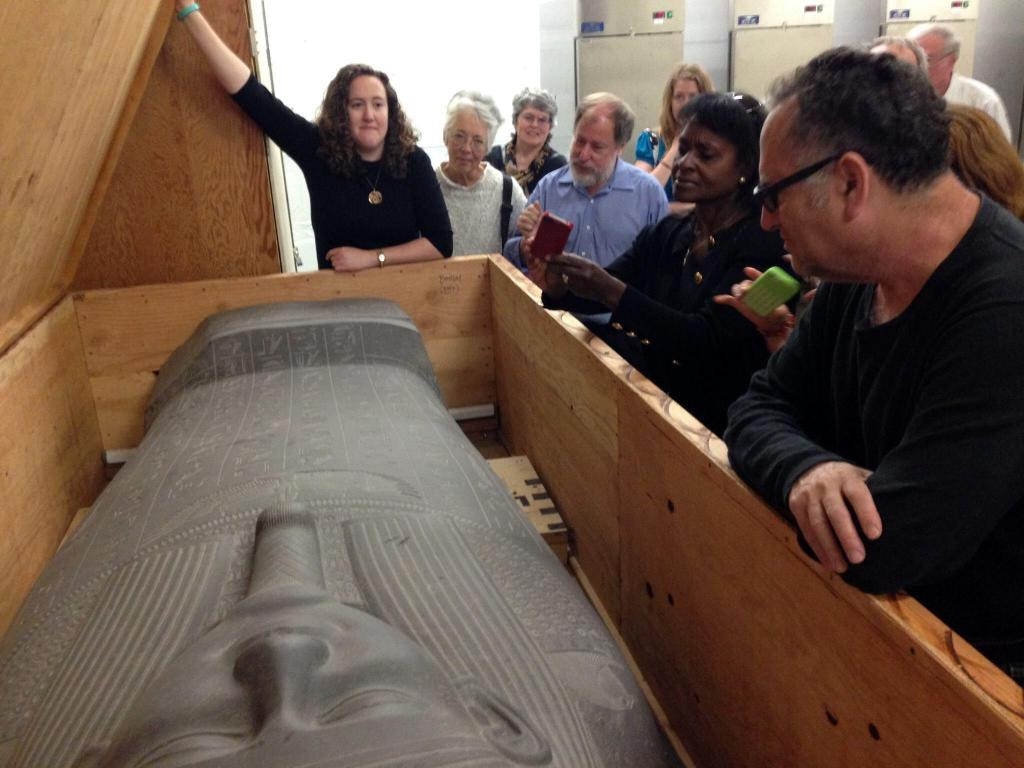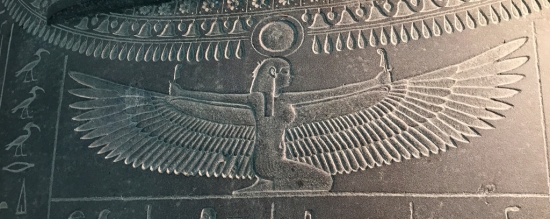The Phoebe A. Hearst Museum of Anthropology is raising funds through October 15th to bring The Doctor, a gargantuan Egyptian coffin lid, to the public for the Museum’s grand re-opening in 2016. The 2,500 year-old stone coffin lid weighs three tons and is a particularly rare item in the Heart’s collections. Associated with the burial of Psamtik, a chief physician in ancient Egypt, the lid is decorated with spells asking fifteen gods for protection, ensuring his name was remembered for his eternal afterlife. The Hearst Museum will be raising funds to transport The Doctor from storage to a display in the new Kroeber Hall gallery, make a 3D model of the coffin, and install touchscreen displays for interacting with The Doctor.
Dr. Elizabeth J. Minor, Development Associate at the Hearst Museum, recently spoke with Digital Humanities at Berkeley about The Doctor and other projects at the museum. Modeling the doctor, Minor explained, would be a great boon to both researchers and members of the public. Similarly large coffins are scattered among ancient Egyptian collections around the world. When working with monumental objects, scholars are immediately confronted by material constraints. Viewing the objects from multiple angles may require ladders, additional help, and other equipment to support the object. Digital 3D models allow scholars to easily compare and analyze The Doctor and other large coffins, which are scattered among ancient Egyptian collections around the world. These digital models offer the ability to zoom in on an inscription, view the object from a variety of angles, and study the relative dimensions of the objects.

This type of material analysis is a key research component for DH Fellow Rita Lucarelli, Assistant Professor of Egyptology. Lucarelli’s current work examines Book of the Dead texts as they are adapted to a variety of material objects (coffins, in particular). Using photogrammetric techniques, Lucarelli will create 3D models of several coffins in the Hearst’s collection. In this short video, Lucarelli discusses some of the magical spells inscribed on The Doctor and how they relate to the materiality of the object.
A touchscreen display will also allow museum visitors to interact with The Doctor. Minor, who has worked on 3D modeling projects that range from tiny objects to entire gravesites, looks forward to bringing the public into the collections. “The public can have ‘hands-on’ experiences with these rare or fragile objects. The digital humanities give us a way to bridge our research interests with wider audiences.”
Crowdfunding for the project closes on October 15, 2015.
Learn more about how the Hearst Museum is applying digital tools to the study of materials objects:
